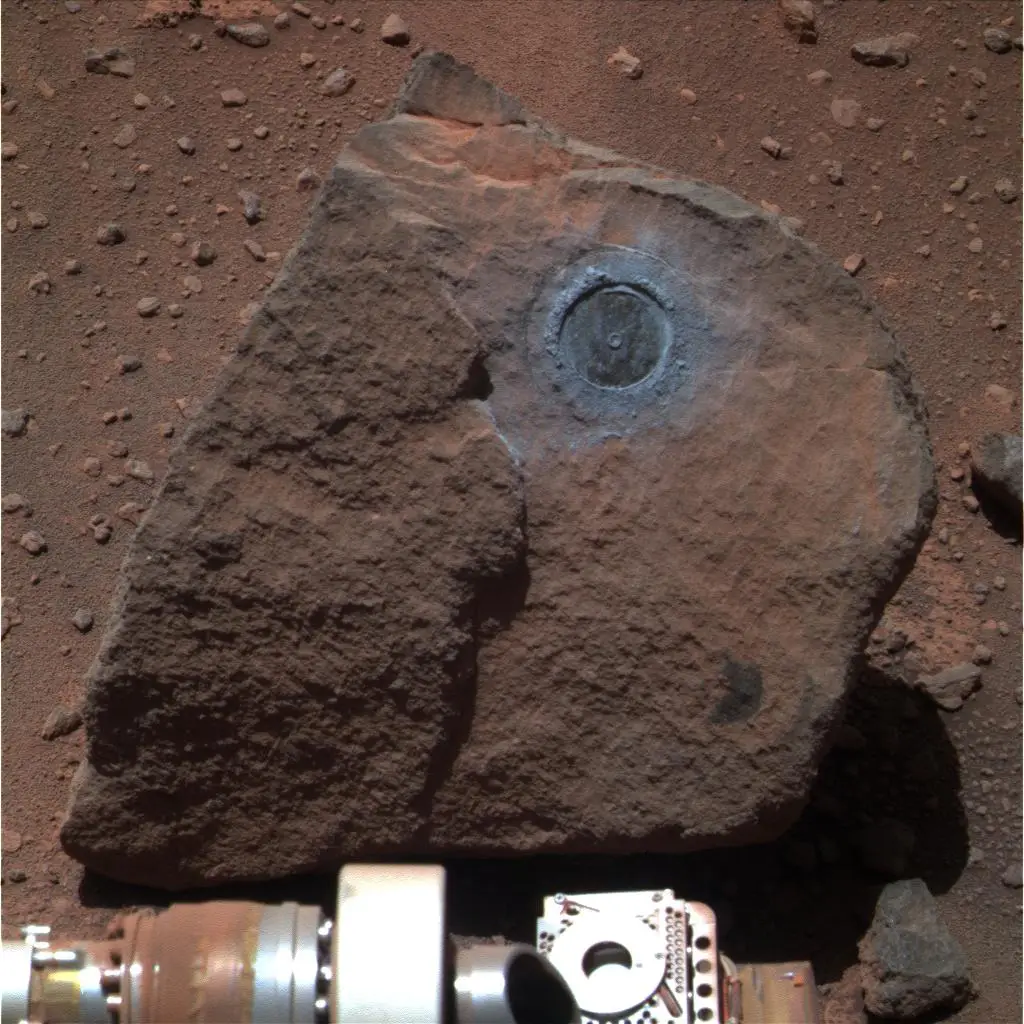Mars Rover Data Yields New Findings
Mars Rover Data Yields New Findings

When the Mars Exploration Rover (MER) Opportunity landed on the red planet in 2004, its nominal mission was planned to last only a few months. Instead, the rover stayed active on Mars, sending back images and data for analysis until 2018.
EEPS has a long history with the MER missions, with Professors Hap McSween and Jeff Moersch both having worked on the missions. Now, researchers including Tyler Seyglinski (MS geology ’24) are making new and unexpected discoveries based on Opportunity’s amazing run.
Studying under Assistant Professor Brad Thomson, Seyglinski worked with a legacy dataset from Opportunity, tracking energy consumed by the rover’s Rock Abrasion Tool (RAT). This device was used to grind down the surface of rocks on Mars to provide fresh, unweathered surfaces for further analysis.
As it turns out, there was a strong correlation between the energy RAT used to abrade a surface and the sampled rock’s strength and porosity. Seyglinski used the recorded motor energy expended to estimate rock strength. He also mentored undergraduate students Kenzie Dale and Anna Nichols to help collect porosity data. In the end, the data provided the foundation for his thesis, which he defended in May 2024. Seyglinski’s results indicate that the sampled rocks were weakly lithified and likely experienced only shallow burial, based solely on RAT energy consumption.

